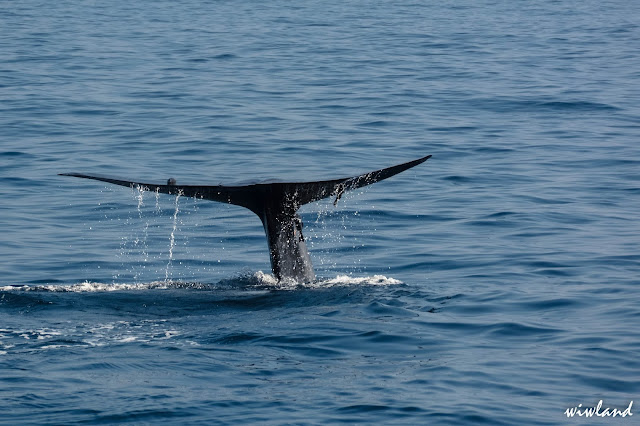Whales are creatures of the open ocean; they feed, mate, give birth, suckle and raise their young at sea. So extreme is their adaptation to life underwater that they are unable to survive on land. Whales range in size from the 2.6 metres (8.5 ft) and 135 kilograms (298 lb) dwarf sperm whale to the 29.9 metres (98 ft) and 190 metric tons (210 short tons) blue whale, which is the largest creature that has ever lived. The sperm whale is the largest toothed predator on earth. Several species exhibit sexual dimorphism, in that the females are larger than males. Baleen whales have no teeth; instead they have plates of baleen, a fringe-like structure used to expel water while retaining the krill and plankton which they feed on. They use their throat pleats to expand the mouth to take in huge gulps of water. Balaenids have heads that can make up 40% of their body mass to take in water. Toothed whales, on the other hand, have conical teeth designed for catching fish or squid. Baleen whales have a well developed sense of "smell", whereas toothed whales have well-developed hearing − their hearing, that is adapted for both air and water, is so well developed that some can survive even if they are blind. Some species, such as sperm whales, are well adapted for diving to great depths to catch squid and other favoured prey
Powered by Blogger.
Search This Blog
My Blog List
Advertisement
Random Posts
Recent Posts
Travel everywhere!
Keep Traveling
Featured
Main Navigation Menu
About Me
Contact Form
Climb the mountains
Popular Posts
-
Take Colombo-Kandy main road and it is situated near Kegalle . Turn right at Nelumdeniya junction and the temple is situated nearly 3 km...
-
Negombo is one of the best places in SriLanka if you want to see sunset. If you a are planing on spending your evening on a beach Negombo...
-
If you are a cascade or a waterfall hunter Bulathkohupitiya is a best place you can visit while traveling in Srilanka. see the map . ...
Popular
-
Take Colombo-Kandy main road and it is situated near Kegalle . Turn right at Nelumdeniya junction and the temple is situated nearly 3 km...
-
Negombo is one of the best places in SriLanka if you want to see sunset. If you a are planing on spending your evening on a beach Negombo...
-
If you are a cascade or a waterfall hunter Bulathkohupitiya is a best place you can visit while traveling in Srilanka. see the map . ...
-
This place is surrounded by tress and natural creatures. This is a better place for mediation. That's why Buddhist monks have ...
-
Meemure,Srilank Meemure is one of the most beautiful places you can visit in srilanka. It is situated near Hunnasgiriya, Colombo>Kan...

Masterchef

Munere veritus fierent cu sed, congue altera mea te, ex clita eripuit evertitur duo. Legendos tractatos honestatis ad mel. Legendos tractatos honestatis ad mel.
, click here →
Tags
Created By SoraTemplates | Distributed By Blogger Templates










































No comments:
Post a Comment